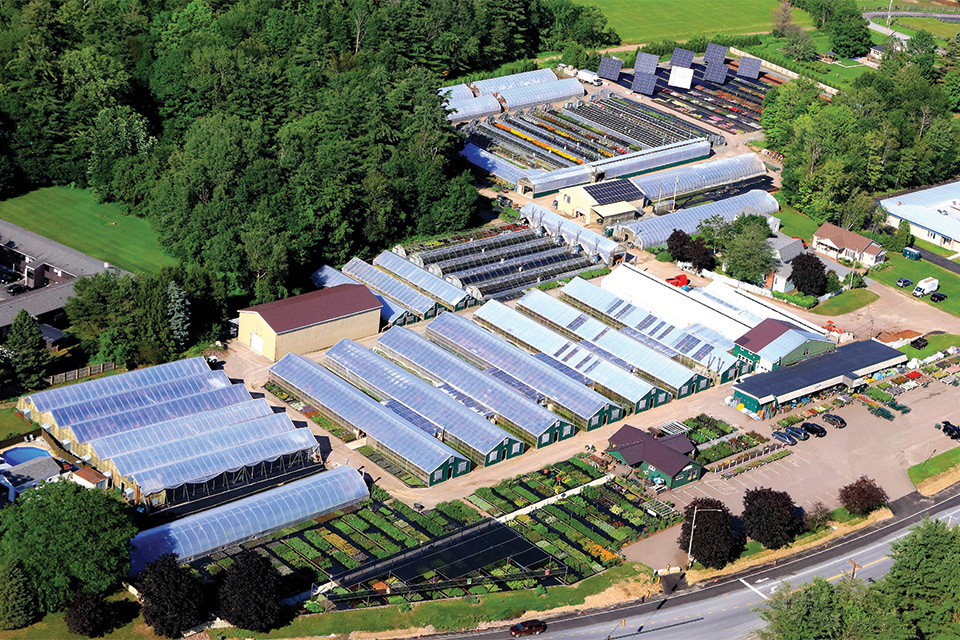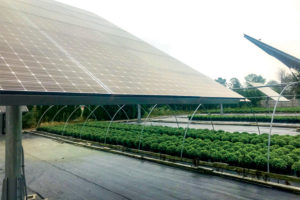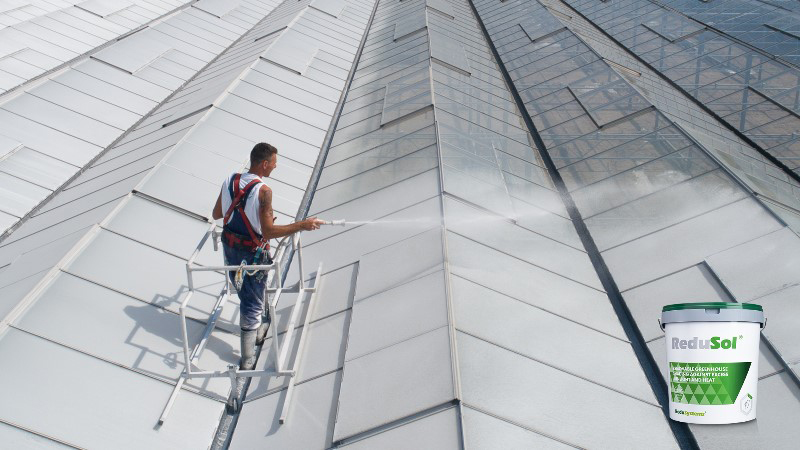How Solar Panels Can Help Reduce Greenhouse Crop Production Costs

With the addition of its roof-mounted solar panels and the eight stand-alone panels, Claussen’s Greenhouse generates about $2,500 worth of electricity a month and is enjoying the ultimate seven-year payback on the outlay of cash it borrowed at the time of installation. Photo by Claussen’s Greenhouse.
After almost five decades of growing top-quality plants for our customers in and around Vermont, my business partner at Claussen’s Greenhouse, Bill Claussen, and I decided that we needed greater profit margins to help deal with increasing energy and labor costs each year. Growers in the Northeast, although largely secluded and secure from tornadoes, hurricanes, and earthquakes, certainly get knocked down each year from increased utility costs and higher natural gas prices than most places in the country.
After purchasing an acre and a half of adjacent land from our neighbors six years ago, we decided the outdoor growing space that we acquired had to become an avenue of increasing our overall production numbers. We also saw it as a huge opportunity to lower our utility costs by installing solar panels.
When we started this process, we turned to All Earth Renewable Energy Systems, a well-respected Vermont company and a local energy entrepreneur that designs and manufactures solar panels for customers around the country. Our installation contractor, Smith McClain of Bristol, VT, an authorized contractor for All Earth, came highly recommended from other growers in Vermont. After several meetings with the contractors, we ordered eight 20-foot by 20-foot solar panels, along with an array of panels for a roof-mount system.

The purpose of installing the solar panels at Claussen’s Greenhouse was to objectively generate enough power a year to offset the increased cost of running 50 1,000-watt lights for 16 hours a day in the worst time of the year, so every aspect of power generation helps, says Co-Owner Christopher J. Conant.
The roof-mount system of our solar power-generating equipment is used directly by our soil production facility, unlike the stand-alone panels in which the power generated is sold back to the electric company at approximately 15.3 cents a kilowatt. It fits quite nicely, without any obstructions from the roof design or from our neighbors (you don’t have to obtain a permit for roof-mount systems in Vermont — see below — and they can be installed on any roof top.)
Throughout the process, we learned it was important to be patient, and make certain you have all of your questions answered before you start the project. One of our biggest challenges was that we had to put in an entire new service to ensure that we had enough power feeding our propagation facilities. This alone took several weeks to coordinate with our local utility company and our electrical contractor.
Another challenge was that our three neighbors surrounding the newly acquired property were completely against the sight of solar panels. Even after we had planted 6-foot arborvitae the week we acquired the property, the panels towered more than 12 feet high and 12 feet wide when the project was proposed to the state public service board. Soon after the state application process started, our neighbors filed suit against us in court to stop the project.
After several weeks of delays, and a lot of attorney time and costs, the project was approved by the State Public Service Board. Five weeks later, the project was up and running.
Our mission at Claussen’s has always been growing great plants, and at a higher profit level each year. With the installation of solar generation 12 months a year, and the addition of lighting during the long winter months here in Vermont, we are accomplishing our goal and growing awesome plants to boot.









